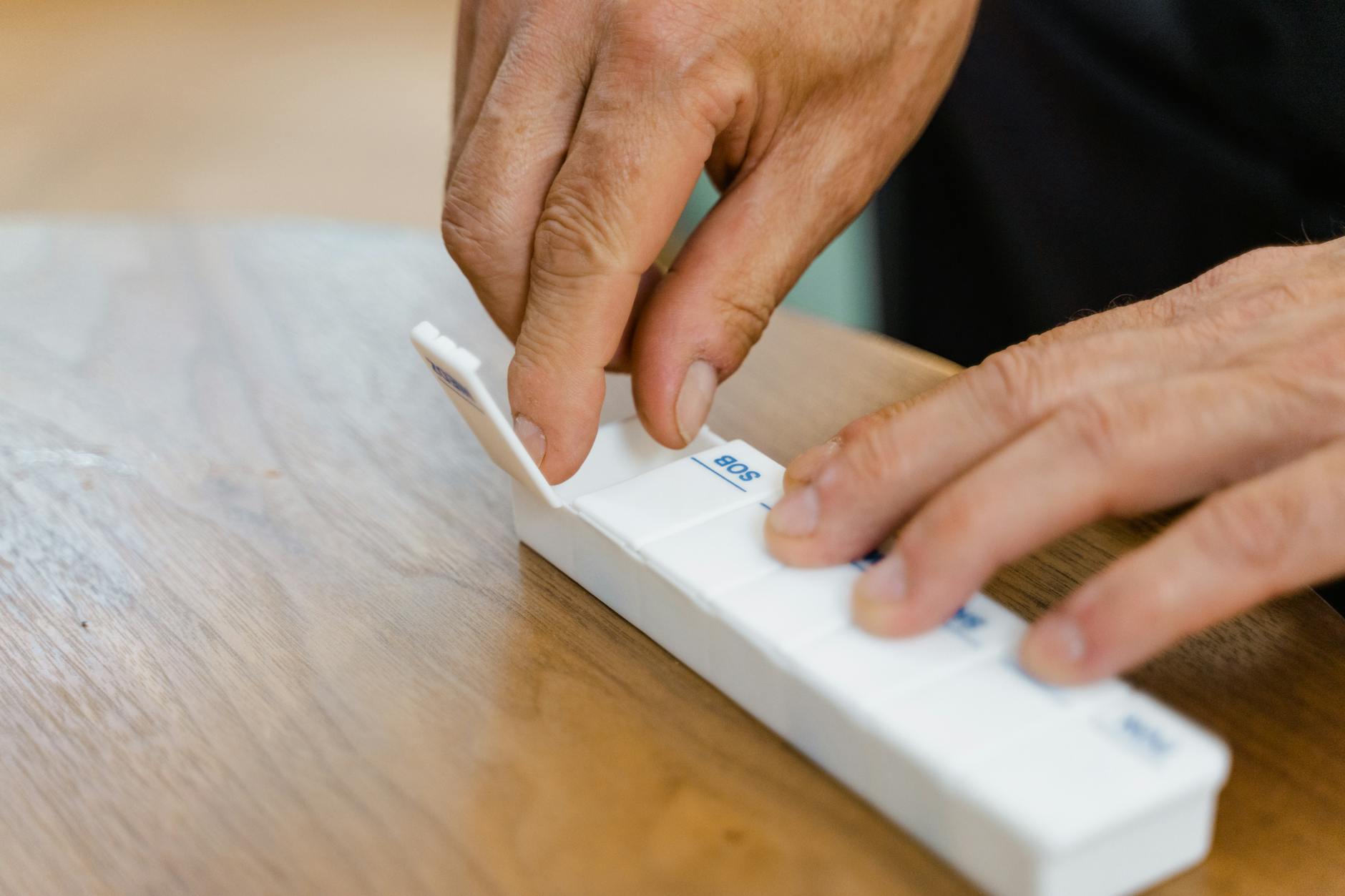Are Australian Companies Ready for a Telehealth Revolution?

Assessing Current Telehealth Infrastructure
Evaluating Internet Connectivity
As an IT consultant from Melbourne, the focus on system optimization strategies is crucial, especially when you're aiming to improve internet connectivity in remote areas. In Tasmania, where the digital landscape can be challenging, it's important to assess existing internet infrastructure. High-speed internet isn't just a luxury; it's an absolute necessity for telehealth services. Start by conducting a comprehensive analysis of the connectivity options available to determine if the infrastructure can support telehealth platforms efficiently.
Available Telehealth Tools
The tech hub at Melbourne CBD often showcases the latest telehealth innovations, but selecting the right tools requires careful consideration of both functionality and user-friendliness. Evaluate tools based on their ability to facilitate seamless video consultations and secure patient data. Ensure compatibility with existing systems to streamline workflow and reduce disruptions.
Integration with Existing Systems
When you're integrating new telehealth systems within existing frameworks, compatibility is key. Many healthcare centres, particularly in rural locations, already operate with specific protocols and software. Aim for a smooth transition by choosing systems that align with current practices. IT seminars at Monash University's Caulfield campus often discuss the feasibility of integrating innovative tech within traditional setups, emphasizing minimal disruption to daily operations. Leveraging these insights can help address integration challenges in a way that's both efficient and effective. In Penrith, utilising services like Penrith after hours doctors or an after hours clinic ensures patients receive continued care even when traditional systems face limitations.
Training and Adoption for Staff
Addressing Skill Gaps
When rolling out telehealth solutions, understanding skill gaps is crucial for seamless integration. These gaps can differ depending on your team's familiarity with modern healthcare technologies, such as telehealth Medicare. Assess your staff's proficiency levels to identify areas needing focus in training sessions. Ensuring that everyone, from IT to front-line healthcare personnel, has a unified understanding of how telehealth operates is essential. Effective communication with key personnel involved, including after hours doctor Derwent Park, ensures that all staff members are comfortable with the technology they will be using.
Staff Training Programs
Developing robust staff training programs is an indispensable part of adopting telehealth systems. Focus these programs on practical, hands-on workshops similar to those at the tech hub in Melbourne CBD. These should cover the essentials of operating telehealth platforms, understanding patient data security, and navigating virtual consultations. It's beneficial to create diverse modules catering to different skill levels. Tailored content can go a long way in empowering your team, boosting overall confidence, and spearheading efficient system use.
Ongoing Support Systems
After the initial rollout, providing ongoing support is crucial. This means setting up dedicated helpdesks, regular follow-ups, and refresher courses to keep skills sharp. Engaging with local tech experts from the innovation labs in Southbank can also be an excellent way to ensure continuous support and system optimization. By fostering an environment where questions and continuous learning are encouraged, staff morale and system efficacy improve, ensuring the seamless adoption of telehealth initiatives.
Patient Engagement Strategies
Simplifying User Interfaces
Creating user-friendly interfaces is crucial to enhancing patient engagement with telehealth platforms. Simplifying the navigation process not only fosters confidence but also ensures that users can access healthcare services without unnecessary hassle. By focusing on intuitive design elements and reducing potential points of friction, patients can easily navigate telehealth applications without feeling overwhelmed. As Caleb, consider collaborating with tech teams at the innovation labs in Southbank to adopt these strategies into your telehealth systems to make these platforms more accessible to your patients.
Educational Initiatives for Patients
Educating patients about telehealth can significantly improve their engagement and ease of use. Establish educational initiatives that highlight the benefits and functionalities of telehealth services, much like an IT seminar at Monash University's Caulfield campus tailored for healthcare. Interactive workshops, video tutorials, and step-by-step guides can be instrumental in demystifying telehealth platforms. These resources can empower patients by enhancing their understanding and encouraging them to utilise telehealth services more confidently, whether they require GP home visit Perth or other services closer to home.
Building Patient Trust
Trust is the cornerstone of any healthcare interaction, more so in virtual settings. To build trust, it's important to demonstrate the reliability and confidentiality of telehealth services. Emphasising aspects such as secure data management and robust after-hours support like GP after hours access will reassure patients about the safety and accessibility of your services outside regular hours. Regular feedback collection and transparent communication are also effective strategies to address patient concerns and build a foundation of trust in telehealth solutions.
Overcoming Common Challenges
Addressing the Digital Divide
When incorporating telehealth solutions, understanding the digital divide is essential. Many rural patients may struggle with limited internet access, which can be a barrier to telehealth appointments. As an IT consultant focusing on systems optimisation, I've found that integrating low-bandwidth communication options, like audio calls, can mitigate some connectivity issues. Furthermore, providing devices or access points in central community areas, like local libraries or community centres, can help bridge this gap.
Maintaining Patient Relationships
Ensuring that technology does not overshadow patient rapport is crucial. While digital solutions offer convenience and broader reach, personal interaction should never be compromised. Enhancing the user experience through empathetic communication in virtual consultations can maintain the patient-practitioner bond. This approach aligns well with maintaining continuity of care, even outside of standard hours, such as services like GP after hours Mount Lawley offer. By integrating personalised approaches and human-centric design, we can uphold the integrity of patient relationships in a digital space.
Managing Technological Failures
Tech failures can be frustrating for both healthcare providers and patients. Implementing robust backup plans, such as having alternative platforms or fallbacks like dedicated phone lines, can ensure continuous service delivery. Regular system tests and updates are crucial, and having a reliable IT support team on standby can be invaluable. These strategies, reminiscent of the meticulous preparation found in Melbourne's innovation labs in Southbank, equip healthcare teams to respond effectively to any technological hiccups, ensuring patient care remains uninterrupted.
Expert Insights on Optimizing Telehealth
Collaborate for Success
Drawing from the expertise within the tech hub at Melbourne CBD, it's clear that successful telehealth implementation necessitates collaboration with tech experts. This partnership is not just about the integration of cutting-edge technology but also involves tailoring solutions that align with the unique needs of your practice. The innovation labs in Southbank are a testament to how multidisciplinary efforts can drive impactful change in medical services.
Harnessing Feedback for Growth
To achieve sustained success in telehealth, regular feedback collection is vital. This feedback, often gathered through IT seminars at Monash University's Caulfield campus, provides essential insights for identifying areas of improvement. By leveraging patient and staff feedback, healthcare providers can ensure their systems remain user-friendly and robust.
Embrace Continuous Improvement
Central to maintaining an effective telehealth system is committing to continuous improvement cycles. This approach emphasizes ongoing upgrades and troubleshooting, ensuring that patient and staff experiences remain seamless. By periodically reviewing system performance, you can avoid potential pitfalls and adapt new technologies as they emerge. Engaging in system optimization strategies, such as regularly updating software and hardware components, can significantly enhance overall service delivery.
By focusing on these strategies, healthcare providers can harness the full potential of telehealth solutions, offering efficient and accessible services that resonate with patients and staff alike.


